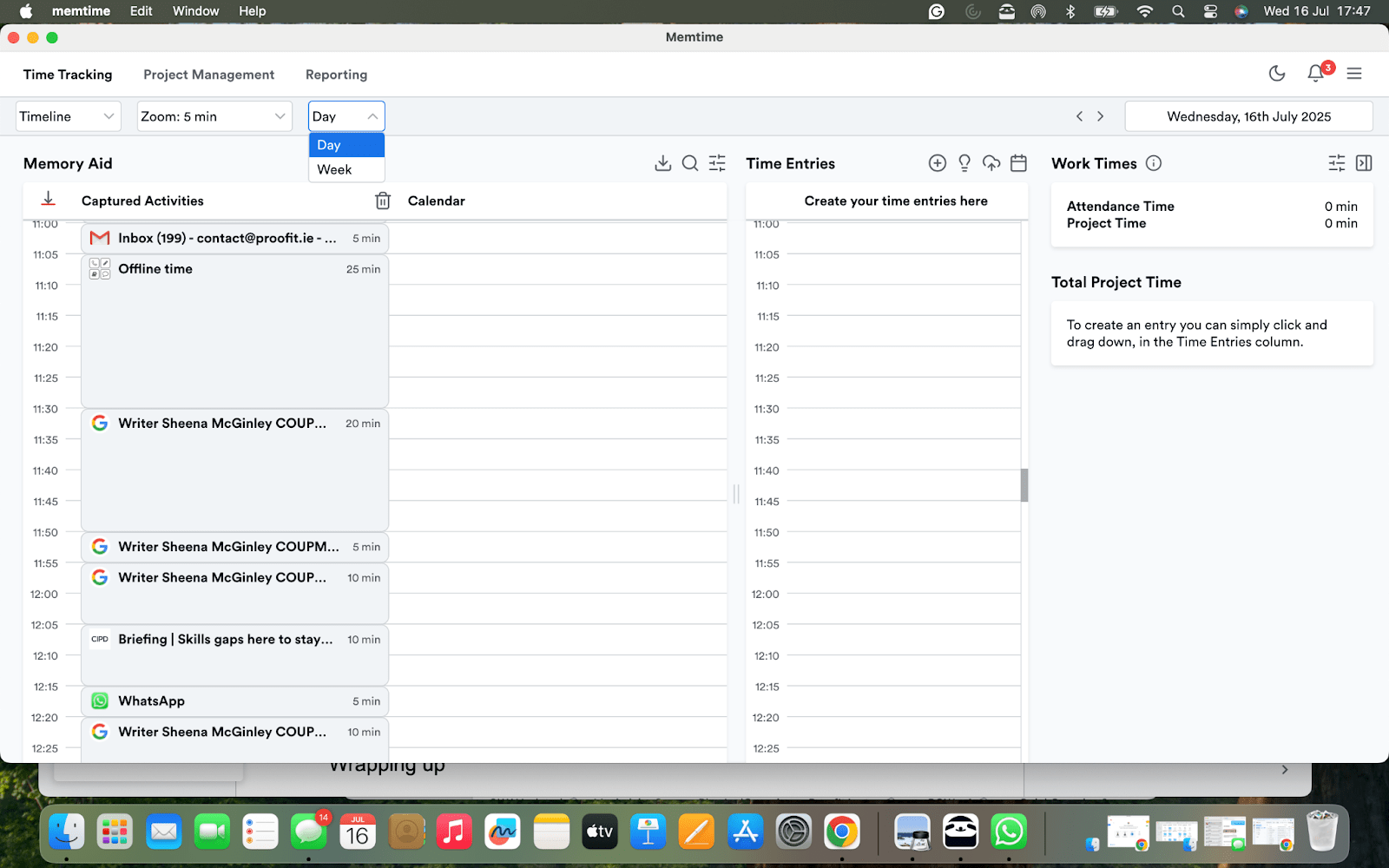Buckets of Hours: What Works for Billing & Tracking Profitably
For service businesses, billing methods are more than just admin details. In fact, they’re a stepping stone to profitability and client satisfaction. And then, profitability is the backbone of whether your business thrives, and survives.
One billing model growing in popularity you might come across, is the buckets of hours approach. It’s a prepaid time structure that brings your clients flexibility, and you – income consistency.
While intuitive in concept, there are some crucial elements that make or break this model. You see, it works well only when paired with accurate time tracking and transparent communication. Without these, you risk overservicing, missed renewal opportunities, or worse - you will be giving away hours (upon hours) for *whispers* freeeee.
So, join us as we explore the “buckets of hours” meaning, and do a deep-dive into how this billing model works in the real-world. Then, we’ll shed light on pros, cons, best practices, and learn how smart time tracking tools like Memtime help you keep on track.

What is the “buckets of hours” model?
With buckets of hours, clients prepay for a block of your time, and then use it up as they need support. You can think of it like drawing from a prepaid balance. The time chunks differ from service to service, yet common practice is to offer sets in the range of 10, 25, or 50 hours.
Unlike retainers or billing after the service is provided, a big plus of a bucket of hours is that it brings you revenue up front, and then gives your clients the freedom to access your help when they need it, without overcommitting (that makes it easier to sell, too).
Here’s how that flexibility typically works in practice:
- When it comes to rates, you might want to offer a better hourly rate for larger bundles or adjust pricing based on the type of work included. This, for example, gives you freedom to set cheaper rates for the work you enjoy more.
- Buckets usually come with a time limit in the realm of 30, 90, or 180 days so hours don’t just sit there unused. This is very important, as busy clients might want to circle back a year after.
- You get a nice scope clarity, as you get to define what’s billable and what’s not from the start. It saves you from those dreaded “is this included?” chats later.
- Clients get flexible access to your time and expertise, but you still remain in control, and get an organized way to manage your workload.
Who should use buckets of hours?
The buckets of hours model works best when your clients need you regularly – but not every single day. It’s a sweet spot between full retainers and pay-as-you-go billing.
Clients get predictable help without a long-term contract. You get upfront payment, better scope control, and ongoing engagement. It’s a win-win, as long as expectations are clear.
Here are a few real-world examples of where this model fits perfectly:
- 🧠 Consultants offering strategy sessions on-demand – no need for a fixed monthly retainer.
- 🖌️ Freelance designers working with several small clients who want occasional tweaks or new assets.
- 💻 Dev teams doing regular maintenance, updates, or bug fixes across multiple clients.
- 📈 Marketing agencies providing campaign support, edits, reporting, or martech services.
- ⚙️ Specialized service providers whose work varies month to month but still needs structure.
If your work is valuable but your clients don’t need you full-time, this model gives you both the control and flexibility you’re probably missing.
Pros – why service providers love this model:
- 💰 Better cash flow – getting paid upfront gives you breathing room and financial stability.
- 🤝 Flexible for clients, protective for you – they get on-demand access, you avoid the chaos of endless “quick requests.”
- 🚪 Easy entry point – lower commitment makes it easier to start working with new clients.
- 📊 Scales well – once your system’s in place, it’s easy to apply across multiple clients without reinventing the wheel each time.
Cons – things to watch out for:
- ⏱️ Overservicing happens fast – if time tracking isn’t tight, you’ll give away hours without realizing it.
- 🗓️ Clients forget to use their time – and then get frustrated when it expires.
- ❓ “Is this billable?” disputes – unclear scope leads to awkward back-and-forth.
- 🧾 Manual tracking = lost revenue – when time isn’t captured properly, it’s your margins that take the hit.
Ultimately, this billing structure works best when paired with disciplined tracking and clear communication.

Bucket of hours examples
Here are some hourly buckets that show how various teams adapt this model to fit their service offerings and client relationships.
- A mid-sized business can use professional assistance without committing to a full-time hire. How? Well, by purchasing a 60-hour prepaid block from an IT support company for systems troubleshooting and tech upgrades.
- For website upkeep and support, a developer offers a 40-hour bucket that can be used over the course of three months.
- A marketing firm provides a 25-hour bucket to encompass campaign edits, design requests, reporting, and a spot of SEO boosting.
- Ten hours of consulting are sold by a freelancer, with a three-month expiration date. As such, these hours can be used as and when needed.
These contracts can be customized by service type, usage timeframe, rate, and deliverables, making them incredibly flexible for everyone involved!
Buckets of hours best practices
Consider using these buckets of hours best practices to steer clear of typical pitfalls and safeguard your profitability. They’ll help to protect your bottom (line) while making the billing model client-friendly.
- Specify what is and isn’t included: Make it clear if strategy sessions, emails, meetings, revisions, and administrative time are all billed. Put this in your contract.
- Use expiration dates: Set deadlines of 60, 90, or 180 days to promote prompt use and avoid open-ended commitments.
- Make sensible use of bulk discounts: Although discounts are common, keep your margins intact. Make sure that revision time, planning, and scope flexibility are still factored into the discounted hourly rates.
- Regularly submit usage reports: By providing thorough reports that outline the hours worked and what is left, you can foster openness and trust. This helps the client get ready for renewal and validates your work.
- Alert when boundaries are about to be reached: Configure internal alerts to detect usage at 90%, 100%, and 75%. Make sure you communicate proactively when time is almost up to prevent awkward delays or projects.
Importance of time tracking in the “buckets of hours” billing model
The buckets of hours model relies on accurate time tracking – without it, hours slip through the cracks, trust erodes, and providers lose revenue. Manual systems, like spreadsheets or timers, often miss the full scope of work. Multitasking and asynchronous tasks make tracking nearly impossible without automation.
Time tracking is foundational to profitability, transparency, and service quality. So, naturally, I’m going to shimmy in a plug for Memtime here, simply because it’s built for this. For instance, it runs in the background, automatically recording every app, file, tab, and meeting.
The end result? A complete timeline of your day/week – ready to assign to clients and projects whenever you’re ready.

Here’s how Memtime directly supports teams working under buckets of hours contracts:
For small and mid-sized service teams, Memtime transforms how hours are tracked and billed, protecting both client trust and that all important access to sustainable profitability.
Wrapping up
The buckets of hours model brings structure, flexibility, and simplicity to time-based billing. For clients, it provides predictable access to support. For providers, it offers upfront revenue and control over workload. But these benefits only materialize when hours are tracked precisely and communication is strong.
With tools like Memtime supporting automated, retroactive time tracking, service providers – such as your good selves – can confidently offer buckets of hours without risking your margins. It transforms an informal billing model into a strategic growth tool, one that increases trust, improves renewals, and strengthens profitability.
So, whaddaya waiting for? A 14-day free trial without needing to part with your credit card details?! Oh, go on, so – but only because you deserve it. All you need to do is set up a free trial account, and we’ll do the rest:
Sheena McGinley
Sheena McGinley is a columnist and features writer for the Irish press since 2008. She’s also a business owner that is conscious of how time tracking can foster progress. She wrote for SaaS companies and businesses that specialize in revenue optimization by implementing processes. She has the unique ability to digest complex topics and make them easy to understand. She shares this precious skill with Memtime readers. When she's not making words work for people, Sheena can be found taking (very) brisk dips in the Irish Sea.






